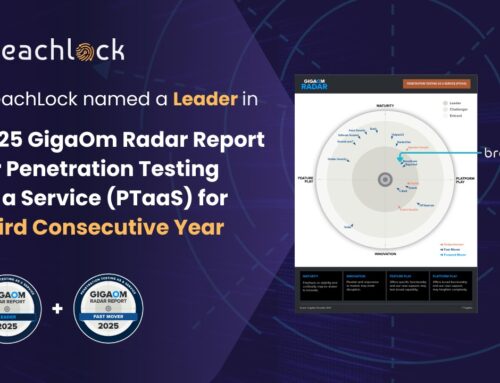
Linux Kernel ksmbd Filesystem Vulnerability Exploited – PoC Released
Unmasking the Threat: ksmbd Vulnerability Puts Linux Systems at Risk
The Linux ecosystem, revered for its stability and security, occasionally faces challenges that demand immediate attention. A recent revelation has sent ripples through the cybersecurity community: a high-severity vulnerability in the Linux kernel’s ksmbd module has been actively exploited, with a full proof-of-concept (PoC) now publicly available. This development underscores the critical need for vigilance and prompt patching, particularly for organizations and individuals relying on Linux-based systems for critical operations. This document delves into the specifics of this vulnerability, its potential impact, and crucial remediation steps.
Understanding CVE-2025-37947: A Deep Dive into the ksmbd Vulnerability
The vulnerability, officially tracked as CVE-2025-37947, is categorized as an out-of-bounds write. In simpler terms, this means that an attacker can manipulate the system to write data outside the intended memory region. Such an action can have severe consequences, often leading to system crashes, arbitrary code execution, or, in this case, a pathway to privilege escalation.
The ksmbd module is the Linux kernel’s implementation of the SMB (Server Message Block) protocol, which is widely used for file sharing across networks. Its deep integration within the kernel makes vulnerabilities particularly dangerous, as they can bypass many user-space security controls. The release of a reliable PoC exploit confirms that this flaw is more than theoretical; it’s a practical threat that can be leveraged by an authenticated local attacker.
The Grave Implications: Local Privilege Escalation and Root Control
The primary concern with CVE-2025-37947 is its potential for local privilege escalation. This means that an attacker who has already gained a foothold (even with limited user privileges) on a vulnerable Linux system can exploit this flaw to elevate their access to root control. Gaining root privileges grants an attacker complete authority over the system, enabling them to:
- Install malware or backdoors.
- Steal sensitive data.
- Modify system configurations.
- Execute any command without restriction.
- Render the system inoperable.
The fact that the exploit specifically targets an authenticated local attacker highlights the importance of strong user authentication and robust perimeter defenses. However, it also emphasizes that once an initial breach occurs, this vulnerability provides a direct path to total system compromise.
Proof-of-Concept Released: What It Means for Your Security Posture
The public availability of a full proof-of-concept (PoC) exploit dramatically increases the risk associated with CVE-2025-37947. PoCs act as blueprints, demonstrating exactly how a vulnerability can be exploited. This lowers the bar for less-skilled attackers and accelerates the development of more sophisticated attacks. Security teams should consider the existence of this PoC as a strong indicator that active exploitation attempts are imminent or already underway.
For organizations, this means that any unpatched Linux systems utilizing the ksmbd module are now at a significantly higher risk of compromise. Expedient action is paramount to prevent potential breaches and ensure the integrity of critical infrastructure.
Remediation Actions: Securing Your Linux Infrastructure
Proactive measures are essential to mitigate the risks posed by CVE-2025-37947. Follow these crucial steps to protect your Linux systems:
- Immediate Patching: The most critical step is to apply security updates as soon as they become available from your Linux distribution vendor (e.g., Ubuntu, Red Hat, Debian, SUSE). Ensure your kernel and ksmbd packages are up-to-date.
- Identify Vulnerable Systems: Conduct a comprehensive audit of all Linux systems to identify those running the ksmbd module and determine their kernel version. Prioritize patching for systems exposed to less trusted networks or hosting critical data.
- Disable ksmbd (if not essential): If the ksmbd module is not required for your operational needs, consider disabling it entirely. This eliminates the attack surface associated with this particular vulnerability. Consult your distribution’s documentation for instructions on how to safely disable kernel modules or related services.
- Principle of Least Privilege: Reinforce strong access controls. Ensure that user accounts have only the necessary permissions to perform their tasks. This limits the lateral movement and potential impact of an attacker who manages to gain an initial foothold.
- Network Segmentation: Isolate critical systems within your network, limiting access to ksmbd services only to trusted applications and users. This can help contain potential breaches if an exploit is successful.
- Monitor for Suspicious Activity: Enhance your monitoring capabilities for unusual network traffic, unauthorized file access, and unexpected process creation on Linux systems. Look for indicators of compromise (IoCs) related to privilege escalation attempts.
Relevant Tools for Vulnerability Management
| Tool Name | Purpose | Link |
|---|---|---|
| Nessus/Tenable.io | Vulnerability Scanning & Asset Discovery | https://www.tenable.com/products/nessus |
| OpenVAS/Greenbone Vulnerability Manager | Open-source Vulnerability Scanning | https://www.greenbone.net/ |
| Lynis | Linux Hardening & Security Auditing | https://cisofy.com/lynis/ |
| OSSEC | Host-based Intrusion Detection (HIDS) & Log Analysis | https://www.ossec.net/ |
Conclusion: A Call to Action for Linux Security
The exploitation of CVE-2025-37947 in the Linux kernel’s ksmbd module represents a significant threat necessitating immediate attention. The availability of a public PoC escalates the urgency for all administrators and security professionals to assess and patch their systems. By understanding the nature of this out-of-bounds write vulnerability and implementing the recommended remediation actions, organizations can significantly reduce their attack surface and safeguard their critical Linux infrastructure against potential compromise.





